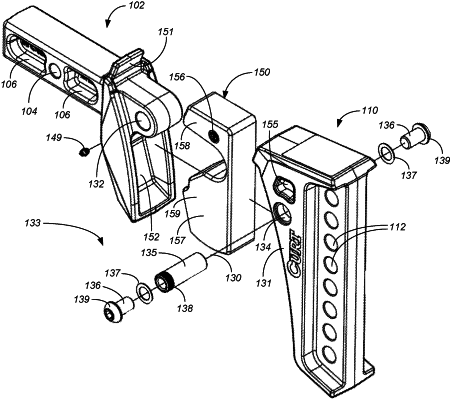| CPC B60D 1/50 (2013.01) [B60D 1/241 (2013.01); B60D 1/065 (2013.01); B60D 1/46 (2013.01)] | 21 Claims |

|
1. A towing hitch to transmit a towing force between a towing vehicle and a towed load, the towing hitch comprising:
a shank formed of metal and having a leading end for insertion into and attachment to a receiver on the towing vehicle, the shank defining a hitch pin opening for receiving a hitch pin to secure the shank to the receiver on the towing vehicle, the shank defining a pivot axis spaced rearwardly from the hitch pin opening, the shank providing a first biasing surface and a second biasing surface;
a head formed of metal separate from the shank which is attachable to the shank for limited pivoting in either a clockwise direction or a counterclockwise direction about the pivot axis during towing, the head providing a third biasing surface and a fourth biasing surface; and
one or more compressible inserts, formed of a material substantially more compressible than the metals of the shank and the head, disposed between the shank and the head, such that pivoting of the head relative to the shank in the clockwise direction moves the first biasing surface toward the third biasing surface and compresses the one or more compressible inserts between the first biasing surface and the third biasing surface, and such that pivoting of the head relative to the shank in the counterclockwise direction moves the second biasing surface toward the fourth biasing surface and compresses the one or more compressible inserts between the second biasing surface and the fourth biasing surface.
|